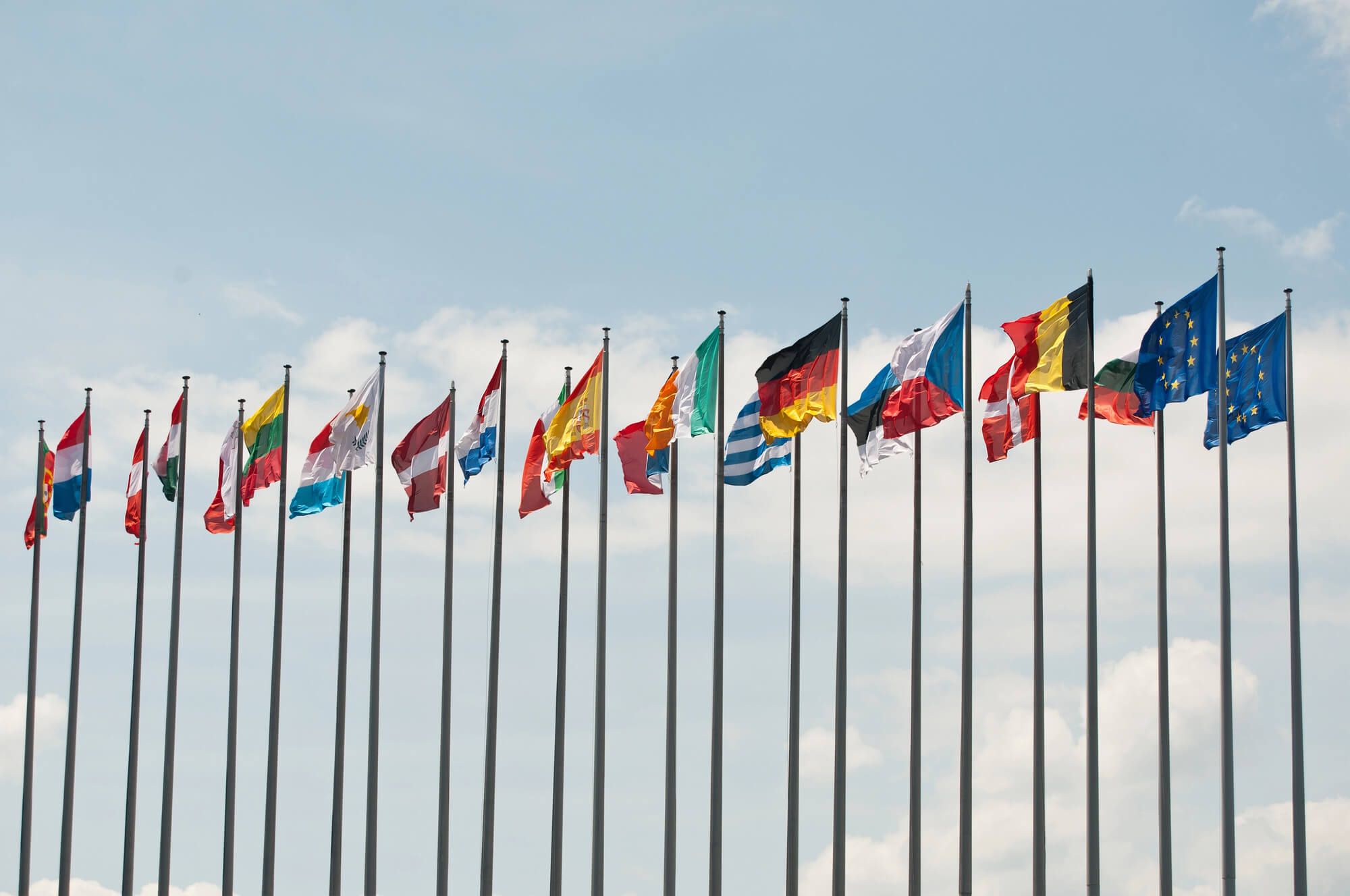OCP, OGP, OECP, Transparency International and a number of other organizations that support transparency and accountability have released recommendations for supporting deliveries for the health care system during the COVID-19 pandemic. I want to tell about the positive steps that we are doing in Ukraine.
Make even supply and demand
Simultaneously with the exponential spreading of the coronavirus pandemic, the demand for goods is also growing. Today the biggest procurements’ problem is, probably, the lack of medicine and medical equipment. Thousand of enterprises have faced an unprecedented and unpredictable surge in demand. All these in the conditions of restricted resources. Due to the open data about contracts, Ukraine resolves this problem using three methods: analysis and consolidation of demand; attraction of new suppliers; planning and management of procurements.
Consolidation of demand
The implementation of quarantine measures in Ukraine from March 12 has caused a huge growth in demand on goods not only on the side of hospitals and medical institutions but also others various sources: citizens who wanted to buy masks and other personal protective equipment, antiseptics, medicine and even lung ventilators; businesses that had to protect their workers; international financial institutions and donors that tried to adapt their programs to fight against pandemic; and volunteers who actively made their own lists of procurements. Some of these categories have decided to buy everything that might come in handy in future: “just buy everything they have, we still won’t be able to exceed the procurement level”, as one of the volunteers told me.
Obviously that this is a very doubtful approach to state procurements. So Ukraine has implemented several instruments to consolidate the demand. This instrument created by the Ministry of Health and the Сentralized medical procurement agency that helps hospitals to predict demand for over 100 products by analyzing hospital capacity, available equipment and current workload. For example, as at April 6, the vast majority of key and none-core hospitals (over 2000) informed about their needs and current stocks, and to transfer this information to the market and people the instrument for business analysis was created.
The public organization Donors.ua that usually deals with blood donation also created a platform where hospitals can make simple lists of needs for fighting against COVID-19. Despite the optionality of the instrument, it is actively used by volunteers who can find a specific hospital and help it directly.
Attraction of new suppliers
Another reason to worry is the lack of suppliers. Overloading of the health care system is one of the biggest threats for our pandemic containment efforts. We are talking not only about hospital capacity and equipment, in particular lung ventilators, but also about whether suppliers are able to provide them with necessary goods and services. In this situation deficit and price increase are expectable. For example, according to the latest data, the prices for masks in Ukraine have grown more than 10 times since January.
The price race puts pressure on suppliers: companies update prices several times a day to meet current demand. From the other side, the situation motivates those who couldn’t fulfil the order, to increase their production facilities. The TI researches show that three out of five best mask suppliers in March previously haven’t sold this type of products.
There are several ways to use open data to increase suppliers capabilities. First, the system of state purchases Prozorro is an ideal source for searching for potential suppliers. Starting from 2016 all public procurement data of the year is available through the open API, including all participants in tenders, their contact information and the regions where they work.
Another way to expedite the purchase is to publish all available offers online. In this way, everyone will be able to see current prices, their change and available goods. The e-shop for state procurements Prozorro Market that was launched in Ukraine in April 2019 is used to gather all offers in one place. Prozorro team makes everything possible to increase the number of propositions: the process of qualification of suppliers has been cardinally simplified, and the most popular items, i.e. tests, sanitizers, masks and protective gears have been quickly added to a product list. Currently, Prozorro Market can be used as an instrument for selection of suppliers, for price monitoring and, of course, for procurements. In fact, gathering all propositions on one platform we more quickly establish a price balance: the suppliers have an opportunity to react on price changes of their competitors in real time.
And the last but no less important moment: open data can easily show the volume of purchases and to motivate more new businesses to become suppliers. The quarantine in Ukraine was implemented on March 12. All necessary changes for creating a special process for conducting state purchases to contain epidemic have been introduced during the first eight days both on legislative and technical levels. The procurement procedure is simplified but it remains open and transparent. Using Prozorro data, we can already say that Ukraine has spent almost 1 bln hrn ($36 mln) in 6 days (until April 5). These data are actively used by businesses that could consider the state procurement market for a period when they can’t engage in their normal business activity.
Procurement strategy
The consolidation of supply and demand makes the process of procurement planning much easier. As I’ve already mentioned the legislation has established a fast and easy and yet transparent procurement method. It doesn’t stipulate for public tender but it requires to publish an announcement including all selection criteria and to provide a full report in time. This approach has been chosen because of the extreme urgency of the need and of the unpredictability of the pandemic.
Of course, direct procurements without open auctions is a complete degradation for market competitiveness. However, it must be acknowledged that this approach was justified in March. At first, on March, 19, the Cabinet of Ministers of Ukraine proposed a version of the resolution №225 that suggested that between the announcement of procurement and the conclusion of a contract had to elapse at least 48 hours. But this is immediately led to serious problems: due to excitement at the market, suppliers refused to wait for contract conclusion so the procurement didn’t take place. That’s why on March, 31, the resolution was amended and now the procurement takes place within one day but with mandatory “trace” in the system: publication of contract, technical and quality specifications of a product.
Due to this, all procedures can be fulfilled in one day and still provide enough data. The complex procurement strategy is developed based on the collected data. The Centralized medical procurement agency (established in 2018) is starting to conduct large volumes of procurement that will increase bargaining power and, hopefully, will reduce the final price. Therefore, open data is vital for understanding both supply and demand.
Moreover, the same open data is important for international financial institutions, private volunteers and charity organizations that also have to see actual uncovered demand. Procurement plans that Prozorro also publishes resolve this problem.
Minimalization of risks in procurements is another important way to use open data. Analytical online-system YouControl provides all purchasing organizations with free access to data to protect them from unreliable suppliers.
Communication is a vital element of success
Data must be used correctly and combined with stockholders engagement and communication so it can be useful. This is why insight analysis and communication are as important part of our work as data collection.
The procurement procedures must be open and simple to attract new suppliers and to motivate businesses that can engage in the process. It is necessary to provide information on market capacity, demand and competitiveness. Moreover, it’s necessary to communicate general statistics of procurements to engage to state procurements those who will receive the hardest blow from the recession caused by the epidemic.
Prozorro achieves that through active communication with businesses through the media and business associations. We share information on the most important procurements related to COVID-19 as well as on the condition of state procurements (in comparison with last year) every week.
Purchasers are another aspect of this communication. They need a whole number of instructions and recommendations: what and how to buy, by what criteria, how to choose suppliers. Dozorro state activists developed guidelines that have been passed to procurement organisations through representatives of the Ministry of Health.
Public monitoring: data analysis to ensure transparency and accountability
Disclosure of procurement data helps to track transactions so any crimes can be easily found, detected, fixed and even, we hope, prevented.
Because of this, instruments for analysing data have been a significant part of Prozorro from its launch. Also as soon as special procurement procedures to contain coronavirus outbreak came into force, business analysis instruments have been updated (for example, bi.prozorro.org and its description).
Transparency International Ukraine has launched a special project based on Dozorro that directly aimed at procurements to resist COVID-19. In the framework of the project the most important topics, in particular, procurement of masks, tests and lung ventilators are analysed several times during a week.
Another good example of the usage of open data about contracts is a map of medical equipment procurement that was developed by journalists of Slidstvo.info. It helps everyone to check how many tests and lung ventilators are available in the state’s hospitals and how many are planned to purchase.
But it’s necessary to monitor not only procurements related to COVID-19. In difficult periods the public becomes more sensitive to nontransparent or unjustified procurements so it’s necessary to communicate any crucial costs.
For example, after the public announcement, the Ministry of Internal Affairs cancelled the purchase of almost 600 cars and Kyiv City State Administration cancelled a contract for 65 mln hrn for street cameras that would allow recognize faces and measure people’s temperature.
Next steps
To overcome the emergency situation a complex approach is needed. The openness of the data and the responsibility of the government can’t be sacrificed even when urgent radical steps are needed. The only way to deal with the current situation is not to try to seize control but to create a coalition of stakeholders around open and transparent contract data. Contract data is only a part of the supply chain: the better we understand it, the more calculated decisions we can make based on it. In the current situation, this will have a direct impact on our lives.
At the same time, it’s necessary to understand that direct non-competitive procurement is only a temporary measure that can’t last forever. The law sets a three months deadline and the list of procurement items is defined in the resolution of the Cabinet of Ministers.
The situation should be closely monitored on the basis of open data. When price volatility will decrease, a large number of suppliers will appear and current demand will decline at the same time – this should be a signal for a gradual reduction of exemptions that are purchased under the most simplified procedure.
Another important step is a creation of Central Certification Body based on Government Enterprise “Medical Procurements of Ukraine” as soon as possible that will allow GE to make purchases not only with funds that allocated directly to the enterprise but also aggregative purchases using funds of other customers: hospitals, laboratories etc.
Attention
The author doesn`t work for, consult to, own shares in or receive funding from any company or organization that would benefit from this article, and have no relevant affiliations



